As they mustered for battle in the Valley of Elah, the armies of Israel knew they faced disaster. Their war against the Philistines was going badly, and no Israelite would stand up to the enemy champion, a mighty armored giant. Finally, a young shepherd answered the call. His brave action gave the world a new phrase to describe a battle against hopeless odds: “David and Goliath.”
World War II generated a classic example: the Winter War. In November 1939, the mighty Soviet Union—with a Red Army numbering in the millions of men, tens of thousands of tanks, and thousands of aircraft—invaded tiny Finland, a third-rate power whose military force was less than a tenth that size. World War II was a deadly environment for smaller nations, with the Great Powers wiping them off the map as they saw fit. Finland was one small power that said “no.” It fought back, leaving behind a legacy of heroism that persists to the present day.
That heroic stand is why the Winter War mattered in 1939, and why it always will. Like David of old, Finland went up against a giant and stared death in the face. The course of that fight showed what a determined people could achieve even in the most desperate circumstances. The Winter War reminded the world that it was better to go down fighting than to submit to injustice. It was a lesson for the ages.
The Soviet-Finnish conflict began in that strange interlude during World War II known as the “Phoney War.” The Germans had invaded and overrun Poland in September 1939, leading Britain and France to declare war on the Reich. And then, for the next six months, nada. The Germans were conflicted about how to proceed, with Führer Adolf Hitler demanding an immediate offensive in the West and most of his officer corps demurring. Their army had beaten Poland with ease, but its tactical performance had left many German commanders underwhelmed. Uncertain at times and unsteady under fire, the Wehrmacht would spend the winter in rigorous training, honing its edge and learning techniques for combined arms warfare. The Allies, for their part, reverted to World War I mode, trying to beat Germany by strangling its economy with a naval blockade, a tactic that would take years. The combination resulted in inaction on all fronts.
Actually, not all. One great power was ready to march. In August 1939, the Soviet Union had signed a nonaggression pact with the Reich. The Nazi-Soviet Pact had shocked the world, as mortal enemies now embraced and drank hearty toasts to each other’s health. It was the key moment in the run-up to war, the factor that allowed Hitler to invade Poland without having to worry about a prolonged war on two fronts.
The pact also contained a secret protocol dividing Eastern European into German and Soviet spheres of influence. Here was a classic example of power politics, with the strong taking what they wanted and the weak having to pay the price. Germany got primacy in Western Poland, “in the event of a territorial and political rearrangement of the areas belonging to the Polish state”—that is, once they had destroyed Poland. The Soviets got much more territory: the province of Bessarabia (then part of Romania, today independent Moldova); the eastern half of Poland (the Kresy, or “borderlands” region); and the Baltic states of Lithuania, Latvia, and Estonia; and Finland. Essentially, the protocol reimposed the borders of the old Tsarist Empire, giving Josef Stalin territories that had broken away from Russia after the Bolshevik Revolution of 1917.
And now it was time to cash in. Through his foreign minister and henchman, Vyacheslav M. Molotov, Stalin began to put the screws to Finland, a sprawling but sparsely populated land that Russia had controlled from 1809 to 1917. On the surface, the demands on the young nation seemed moderate enough. The Soviets wanted a lease on the Hankö peninsula on the southern Finnish coast for use as a naval base. Molotov also sought border adjustments on the Karelian isthmus, 20 miles from Leningrad—a great Soviet metropolis rendered vulnerable by its proximity to the international border. Molotov declared Stalin’s willingness to cede lands in adjoining Soviet Karelia amounting to twice the territory demanded of Finland. In other words, the Soviets promised to give Finland more land they were taking away.
The Finns, however, saw not negotiation but ultimatum. This was the era, after all, of Hitler and Benito Mussolini and Imperial Japan, of lawlessness in the international arena, of the stronger preying on the weaker. The Finns knew that if they ceded any territory to their former imperial masters their independence would be over. The combination of Soviet bullying and Finnish resistance had consequences typical for the era. Soviet demands gave way to threats, and when the talks faltered, Molotov had the last word: “Since we civilians don’t seem to be making any progress, maybe it’s the soldier’s turn to speak.”
And just like that, the world had another war on its hands. On November 30, 1939, the big guns roared, Soviet bombers screamed overhead, and the Red Army invaded Finland. What Finns called the Talvisota (“Winter War”) had begun. Calling it “David and Goliath” might seem a cliché, but how else to describe a war of 168 million versus 4 million?
It made what happened next seem all the more shocking.
The Soviets had to be confident of a rapid, decisive victory. Only months earlier, German Panzer columns had sliced through Polish defenders in multiple sectors, linking up far behind the lines and encircling virtually all of the million-man Polish army. The Poles had fought bravely, even heroically, but they were outclassed. Stalin, Molotov, and the Soviet commanders on the Finnish front were surely anticipating similar success.
What they got was something very different. Despite massive Soviet numerical and material superiority on the ground and ever greater in the air, and round-the-clock bombing of Helsinki and other targets that inflicted heavy civilian casualties, the first month of this conflict defined the term “military disaster.” The Red Army got nowhere and suffered mass casualties in doing so.
Some of it was Stalin’s own fault. In a reaction to the darkening international situation, he had spent two years enlarging the Soviet military. Between 1937 and 1939, the Red Army grew from 1,500,000 men to around 3,000,000; it would reach 5,000,000 by 1941. At the same time, however, Stalin bloodily purged the army’s leadership, with 80 percent of corps and divisional commanders accused of disloyalty, imprisoned, or shot. The combination left masses of poorly trained soldiers serving under officers who were political hacks or scared to death of exercising initiative for fear of falling afoul of Stalin and secret police.
Stalin also had not counted on the Finns to fight—and fight well. Commanding the Finnish army was the wily Marshal Carl Gustav Mannerheim. Tall, handsome, and refined, he was the multilingual scion of Swedish nobility who had settled in Finland in the late 1700s; indeed Mannerheim never became particularly adept at speaking Finnish. He had been born a subject of the Tsar, entered the Russian army, and rose to the rank of Lieutenant General. The Tsar’s February 1917 overthrow and that October’s Bolshevik Revolution led the Grand Duchy of Finland to declare independence. A four-month civil war followed, with Mannerheim successfully leading the “White” faction against the pro-Bolshevik “Reds.” He served briefly as the new state’s regent, chaired Finland’s Defense Council, and at 72, came out of retirement to fight the Russians.
Coolly sizing up the situation, Mannerheim recognized that he would have to wage two wars. He had no choice but to deploy most of the regular army—six of its nine small divisions—on the southern frontier opposite Leningrad. That front ran 90 miles along the Karelian isthmus that bridged the Gulf of Finland and Lake Ladoga. Along this front, he constructed an interlocking system of tank traps, trenches, machine gun nests, and armored bunkers that became known as the Mannerheim Line——and sat patiently, waiting for the the Soviets. When the Soviet 7th Army of General Kirill A. Meretskov lumbered forward in clumsy frontal assaults, the Finns shot them to pieces.
Meretskov was one of those generals who had risen to high rank by virtue of the purges. He would go on to a reasonably successful wartime career but in late 1939, he certainly wasn’t ready for army command. He planned sloppily, hastily deploying assault divisions drawn from the relatively temperate Ukrainian Military District. These troops were neither conditioned nor equipped for the frigid north and its thick forest, and Meretskov knew little about the Finnish forces, their defensive preparations, or even the terrain over which he had to fight. It was, one historian later wrote, an example of “organizational incompetence” from top to bottom.
Uninspired planning led to battlefield disaster. After a perfunctory artillery bombardment, 7th Army assault troops charged. Soviet rounds had negligible effect on the Finns in their protected bunkers, who got to their machine guns in plenty of time to meet—and slaughter—the attacking infantry. Soviet reinforcements were late getting to the front, and almost always went where the Finns were holding up the attack, rather than where the Red Army was making headway. Piling more soldiers into killing grounds of Finnish fire only multiplied Soviet casualties.
While high-intensity combat raged across the isthmus, up north Mannerheim had to conduct a very different kind of war. With nearly 600 miles of border and nowhere near enough regular divisions to cover it, he had to rely upon the Home Guard as the backbone of his defense. These were independent battalions of hardy citizen soldiers who knew every inch of the land, were dead shots, and accustomed to the cold. Virtually all Finns could ski, but the Home Guard specialized in fighting on skis, gliding silently out of the forest, nearly invisible in long white parkas and hoods, to rake a ponderous Soviet column with fire from their viciously effective KP/-31 submachine guns, and then vanish back into the trees.
The Guard preferred soft targets with high impact, like field kitchens and supply wagons, but they also fashioned crude gasoline bombs that worked well against Soviet tanks. First used in the Spanish Civil War, these “Molotov cocktails,” as the Finns called them, were a true poor man’s weapon, and the forerunner of today’s improvised explosive devices (IEDs). While that weaponry might have been primitive, the Finns made up for it with intestinal fortitude, bravery, and grim determination. They call it sisu—“guts.”
As badly as the drive against the Mannerheim Line had gone for the Soviets, what happened in the northern sector was much worse. In the forests near Suomussalmi, a village astride the route through the narrow waist of central Finland, a reinforced brigade of Home Guardsmen ambushed, trapped, and largely destroyed two entire Soviet divisions, the 44th and 163rd. At the village of Tolvajärvi, north of Lake Ladoga, two more divisions, the 139th and 75th, suffered the same fate.
In both battles, roadblocks stalled the attackers long enough for highly mobile ski formations to get around their flanks and into their rear. By Christmas, the Finns had broken Soviet columns into isolated, immobile fragments. The Finns called the starving, freezing, and surrounded invaders motti—sticks bundled for firewood and left to be picked up later. For the Soviets it was an operational disaster of the first magnitude, made worse by the arctic weather. In their plight, the Red Army men turned to a traditional remedy. “They started giving us 100 grams of vodka a day,” one of them wrote. “It warmed and cheered us during frosts, and it made us not care in combat.”
Soviet soldiers fought bravely in all these battles, whether charging the Mannerheim Line or holding on grimly in their motti positions, but their losses soon reached the hundreds of thousands. One lone Finnish sniper, Simo Häyhä, was responsible for 505 of them. A farmer in civilian life and a prize-winning marksman, the taciturn Häyhä kept to himself and rarely said a word as he went about his grim business. The Russians nicknamed him “White Death”—a name that could apply to the entire Finnish army in this period of the war.
By the end of December, the Finns seemed to have won the Winter War. They had stood tall and smashed the invaders. Global opinion rallied to their cause, especially in the democratic west. The British and French governments were actually considering sending aid, perhaps even an expeditionary force, to fight the Soviets. They decided not to get involved, which it was probably all for the best. Such a move would have made the Soviet Union and Germany true brothers in arms, fighting a common war against Britain and France—with almost unimaginable consequences.
The Finns were suddenly world celebrities—good democrats “fighting with the heroic loyalty characteristic of a free people when its liberty is at stake,” as the Times of London put it—while on December 14, the League of Nations expelled the Soviet Union. In the United States, former president Herbert Hoover formed a Finnish Relief Fund to aid the beleaguered nation’s civilians and refugees. Within two months, it raised $2,000,000. Volunteers the world over—from the United States and Canada, and from Hungary, Norway, Denmark, and Sweden—tried to book passage to Finland to fight in the war, much as others had flocked to Spain to fight just three years before.
And yet, even amid Finland’s seeming triumph, the military situation was eroding. In the Bible, David slew Goliath, but in this frozen Valley of Elah, Goliath was still standing. The Finns had staggered the Red Army, but the Soviet Union remained an immense and wealthy country with impressive powers of recuperation. Mannerheim’s forces had no way to carry the war into Russia, and thus no sword to slay their enemy altogether. In war, bigger battalions often find a way to reassert themselves, no matter how serious their early defeats or how righteous the cause of the underdog. So it was in the Winter War.
The dawn of 1940 saw the tide turn quickly when Stalin named one of his bright young officers, General Semyon K. Timoshenko, to command in the theater. The new supremo was just 44 years old, vigorous, and a hard-headed leader who took a sober view of things. Yes, the opening of the war had been a disaster, but Timoshenko knew the Red Army still had the reserves of strength to beat Finland. All it needed was a firm hand and better planning. Meretskov was kicked downstairs to command 7th Army alone. Another army, the 13th under General V. D. Grøndahl, arrived alongside him.
Timoshenko spent January in careful preparation, weeding out inefficient or incompetent commanders, and drilling his troops in assault tactics. When he had tuned the army to his satisfaction, he chose what a military analyst might call the obvious solution. He suspended the fruitless fight to the north and launched a coordinated two-army assault against the Mannerheim Line, with the 7th Army on the left and the 13th on the right. The operation involved 600,000 men, arrayed in four assault echelons, with lavish air and artillery support.
The Soviets again endured stupendous losses, but the Finns could not match such numbers, and neither could the Mannerheim Line. Timoshenko also showed a great deal of finesse, launching elements of his XXVII Rifle Corps across the ice of the frozen Gulf of Finland towards the key port of Viipuri. The appearance of major Soviet forces deep on the Finns’ right flank and rear did what had seemed impossible: it helped force the Finns out of the Mannerheim Line.
The assault opened on February 1, 1940, and cracked the Line by the 11th. Exactly two weeks later, the second-largest city in Finland, Viipuri, was in Soviet hands, as was the main road from Viipuri to Helsinki. By now, the Finns had suffered some 30,000 casualties: a reasonable figure—unless your population happens to be only four million. Blasted out of their one solid defensive position, they had no choice but to ask for terms.
The Soviets had won the Winter War and, in the subsequent Treaty of Moscow, took much more than what they had demanded originally. Finland had to cede Viipuri and the northern port of Petsamo, as well as the entire Karelian isthmus. All told, Finland lost some 11 percent of its original territory. But Soviet victory had come at great cost. Nikita Khrushchev later placed the casualty figure at an even one million. “All of us,” he wrote, “sensed in our victory a defeat by the Finns.” His tally was almost certainly inflated, part of his effort to discredit Stalin, but the reality was bad enough: somewhere between 400,000 and 600,000 total casualties, with 120,000 to 200,000 killed in action—many times the number of men in the entire Finnish army at the start of hostilities. Whatever the true figure, the Soviet Union paid a steep price for what was, in the end, a border rectification.
The Winter War presented a dual face to the world. Phase one featured the Red Army carrying out some of the clumsiest, most inept frontal assaults imaginable. “They chose to throw people chest first into the machine-gun and artillery fire of pillboxes, in bright sunny days,” as one participant put it. Phase two offered an entirely contrary image: youthful and gifted Soviet commanders with a solid grasp of high-intensity combined arms operations, skillfully employing a huge, well-supplied force, and crushing an enemy who had, a few weeks earlier, seemed invulnerable. Only time would tell which was the real Red Army.
Learning the lessons of a war has never been an exact science, and observers at the time drew contradictory conclusions. Many analysts saw their notions of Soviet military incompetence confirmed. Precisely because of its David and Goliath character, the Winter War’s opening phase drew most of the world’s attention. The image of those nimble ski troops slashing into a lumbering adversary was simply irresistible. Certainly Hitler and the German General Staff, imagining an invasion of the invasion of the Soviet Union, looked at the Winter War and pictured a pushover. Perhaps they all should have paid more attention to the more conventional end of the fighting, to Goliath’s rebound, to Timoshenko’s war.
The Soviets, too, had blind spots. To their credit, they realized that the war had been a fiasco. On the debit side, they made the common mistake of overreacting. In the 1930s, the Red Army had been at the forefront of experimentation with high-tempo mechanized warfare. In the wake of the Winter War, the Red Army returned to basics: reconnaissance, security and concealment of columns on the march, carefully phased attacks. Soviet military literature from just after the Winter War showed a force obsessed with the minutiae of battle in cold climates: which gear a tank should use crossing deep snow, the importance of rapid first aid in extreme cold, preparation of ski trails. Soviet doctrine of that period no longer emphasized deep strikes utilizing masses of tanks, but “overcoming the enemy’s long term defenses” and “patiently gnawing through breaches in the enemy’s fortifications.” According to one young commander, the new doctrine was more like “engineering science” than the art of operations or maneuver. But the spring of 1940 was the worst time to be thinking slow and small, as the German invasion in 1941 would prove.
Finally, what of the Finns? They were the global heroes of 1939-40, and the fierce fight they put up probably made the difference between losing border territories and being annexed and occupied by Soviet forces. Unfortunately for them, a desire to win back their lost territories led to a classic wrong turn. They rearmed as feverishly as their tiny economy would allow and prepared for a second round. They never formally joined the Axis, but they did embark on a policy of close military cooperation with Germany, going so far as to allow Hitler to station troops on Finnish soil. On June 25, 1941, three days after the Germans launched Operation Barbarossa, Finnish forces invaded the Soviet Union. This was the Jatkosota, the “continuation war”—far less the stuff of epic, with minimal gains, heavy losses, and, after a massive Soviet offensive into Finland in June 1944, a hasty exit from the war. Finland was no longer a hero in the West—it appeared to be just another one of Hitler’s lackey states. Even in defeat, however, the Finns managed to preserve their independence. They experienced neither a bloody Soviet-style "liberation," nor the agony of Italy, first occupied by its erstwhile German ally, then destroyed in the course of heavy fighting.
The Winter War was a signal moment. The long-term aim of World War II—when all was said and done—was the defense of the weak against the strong: Poland versus Germany, China against Japan, Greece versus Italy. The era’s dictators thought they could laugh at international law, but eventually they all learned to stop laughing. The Winter War was a David and Goliath tale that invited contempt for bullying and aggression. The Soviets won territory, the Finns, the admiration of the world.
In that sense, the loser won.
Originally published in the August 2014 issue of World War II magazine.
Robert Citino, PhD
Robert Citino, PhD, is the former Samuel Zemurray Stone Senior Historian in the Jenny Craig Institute for the Study of War and Democracy.
Cite this article:
MLA Citation:
APA Citation:
Chicago Style Citation:
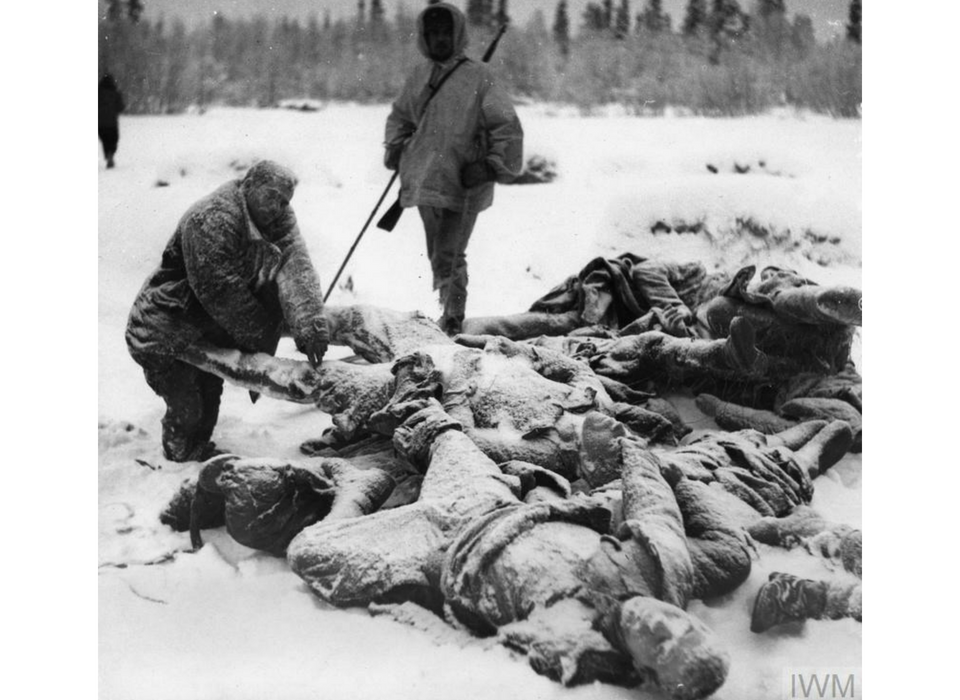
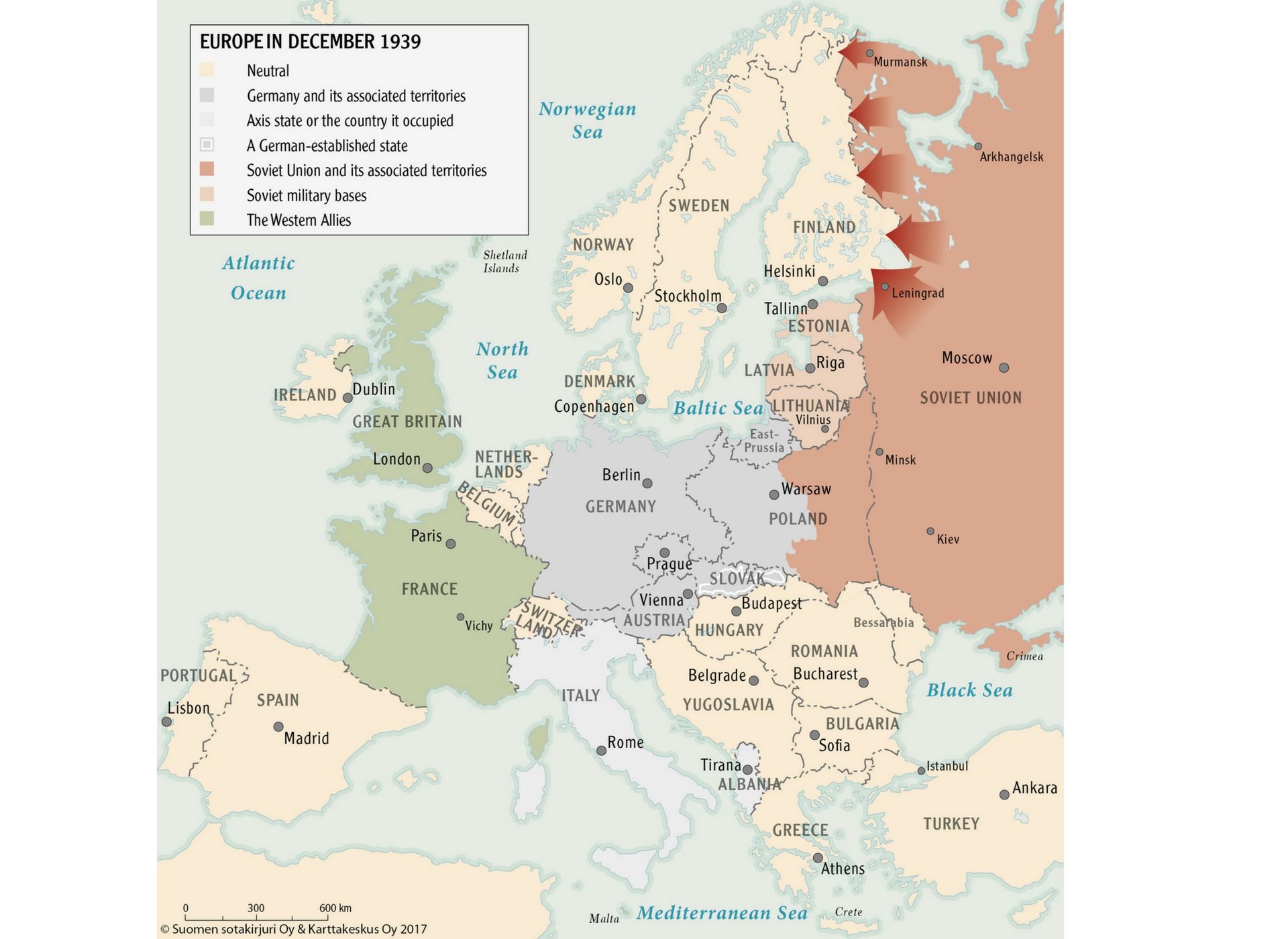
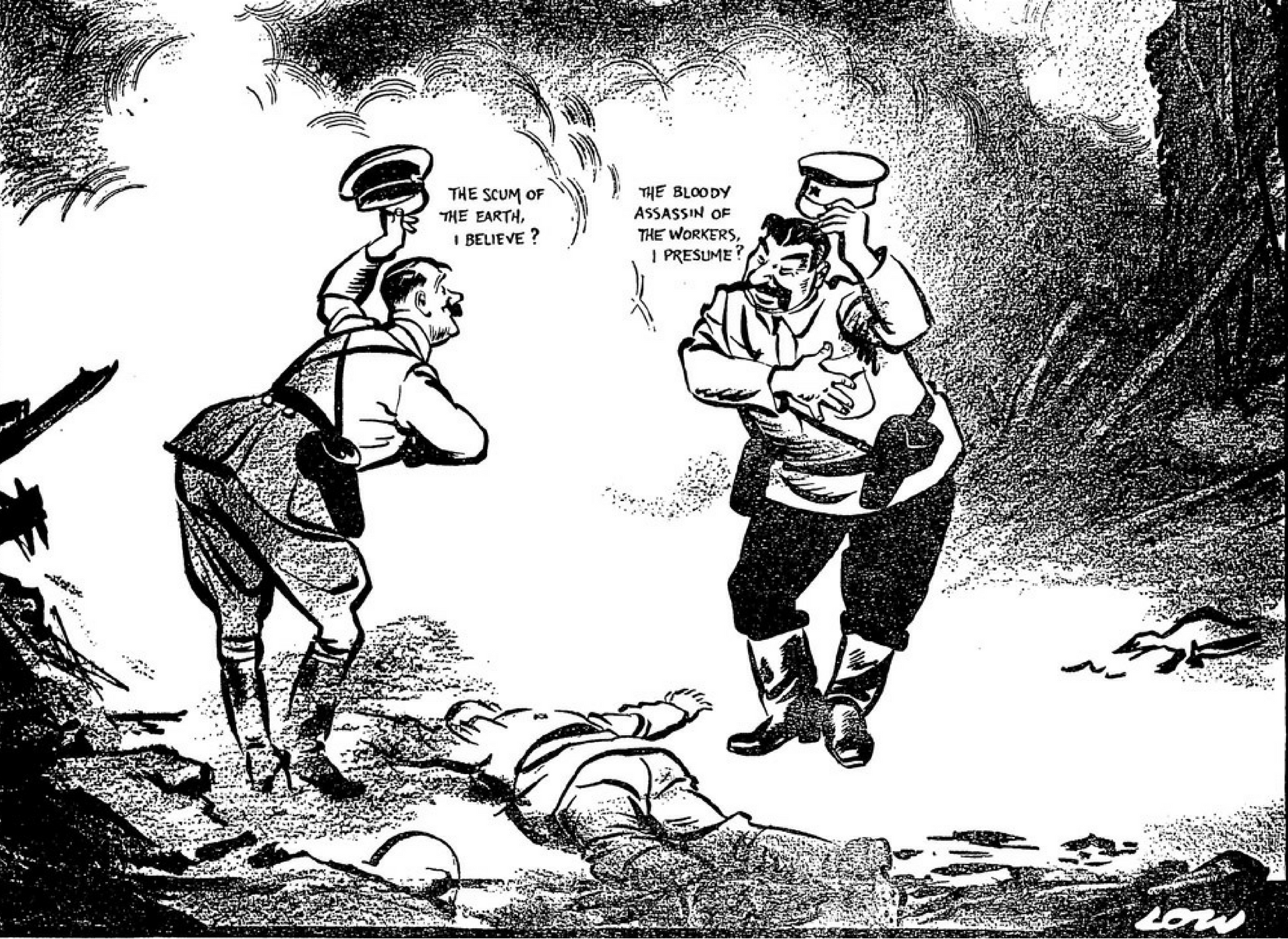
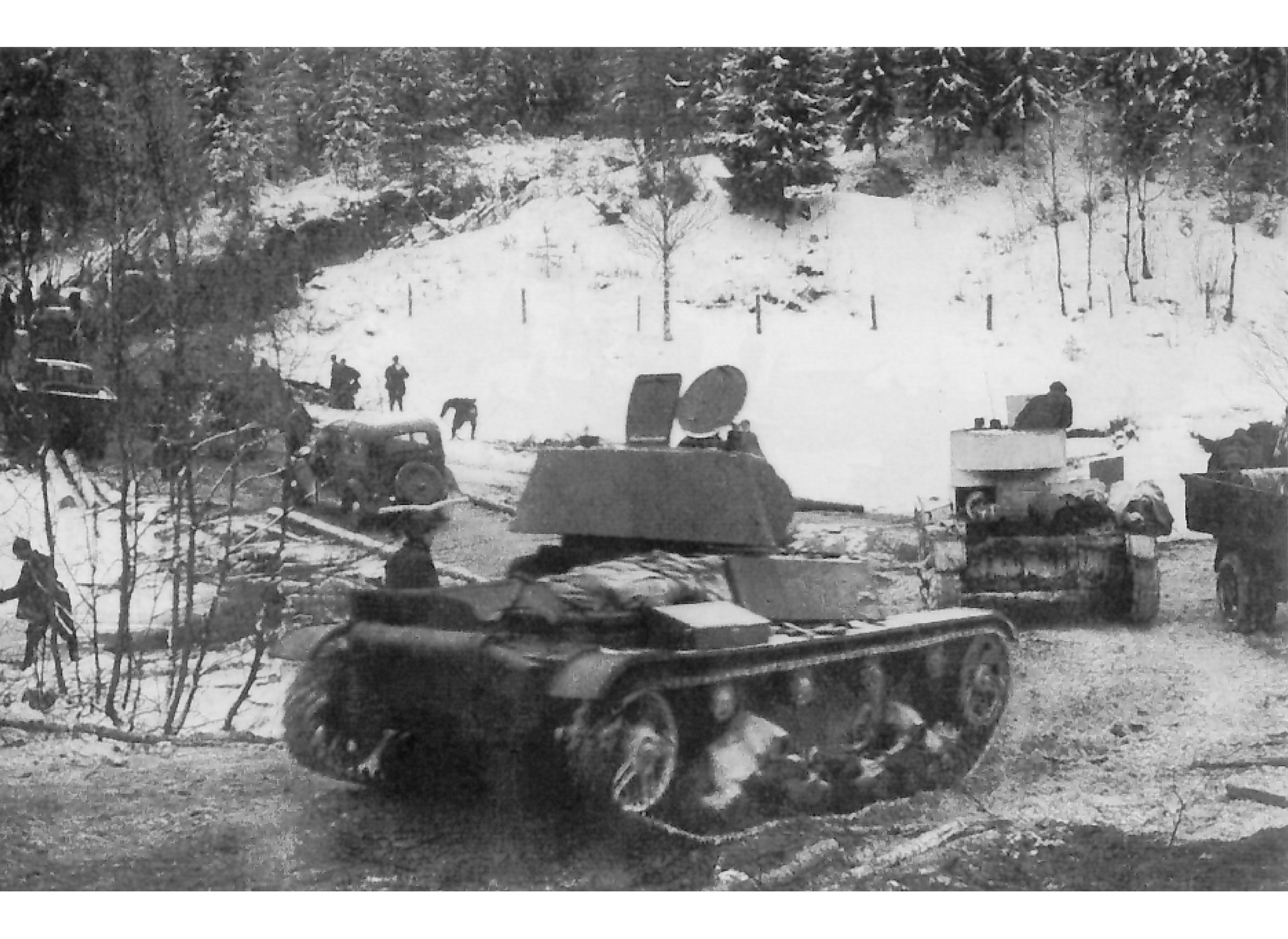

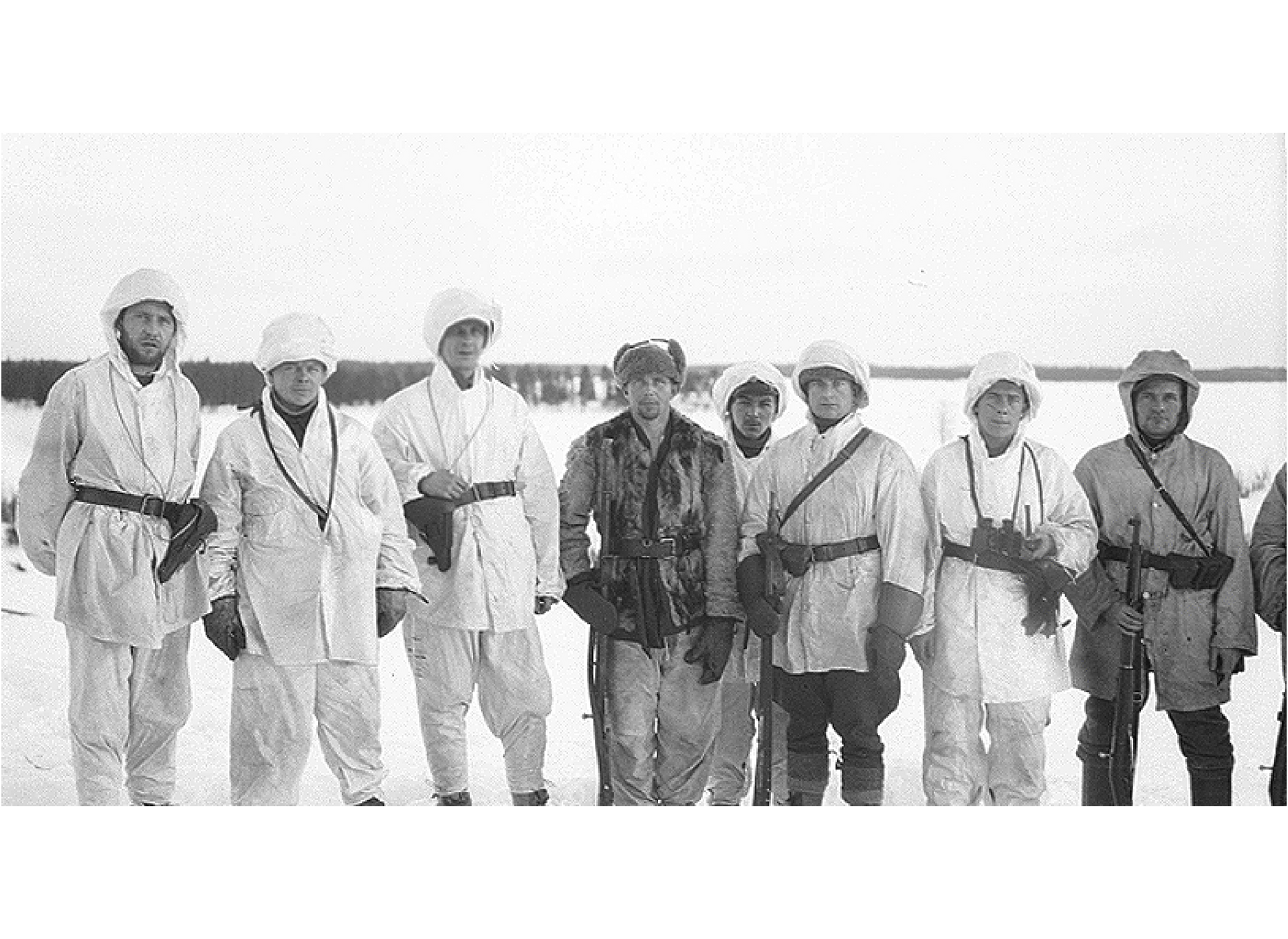
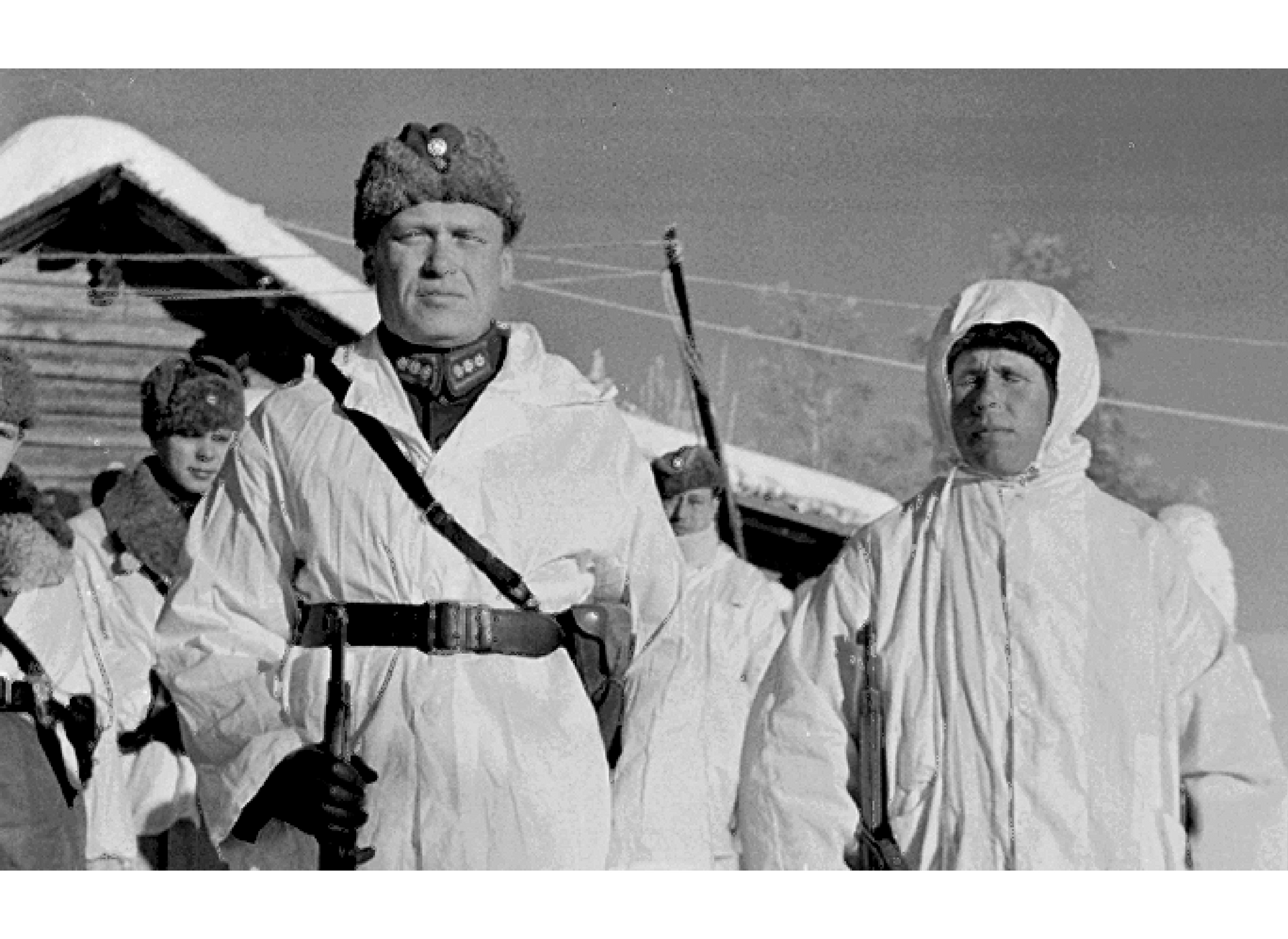
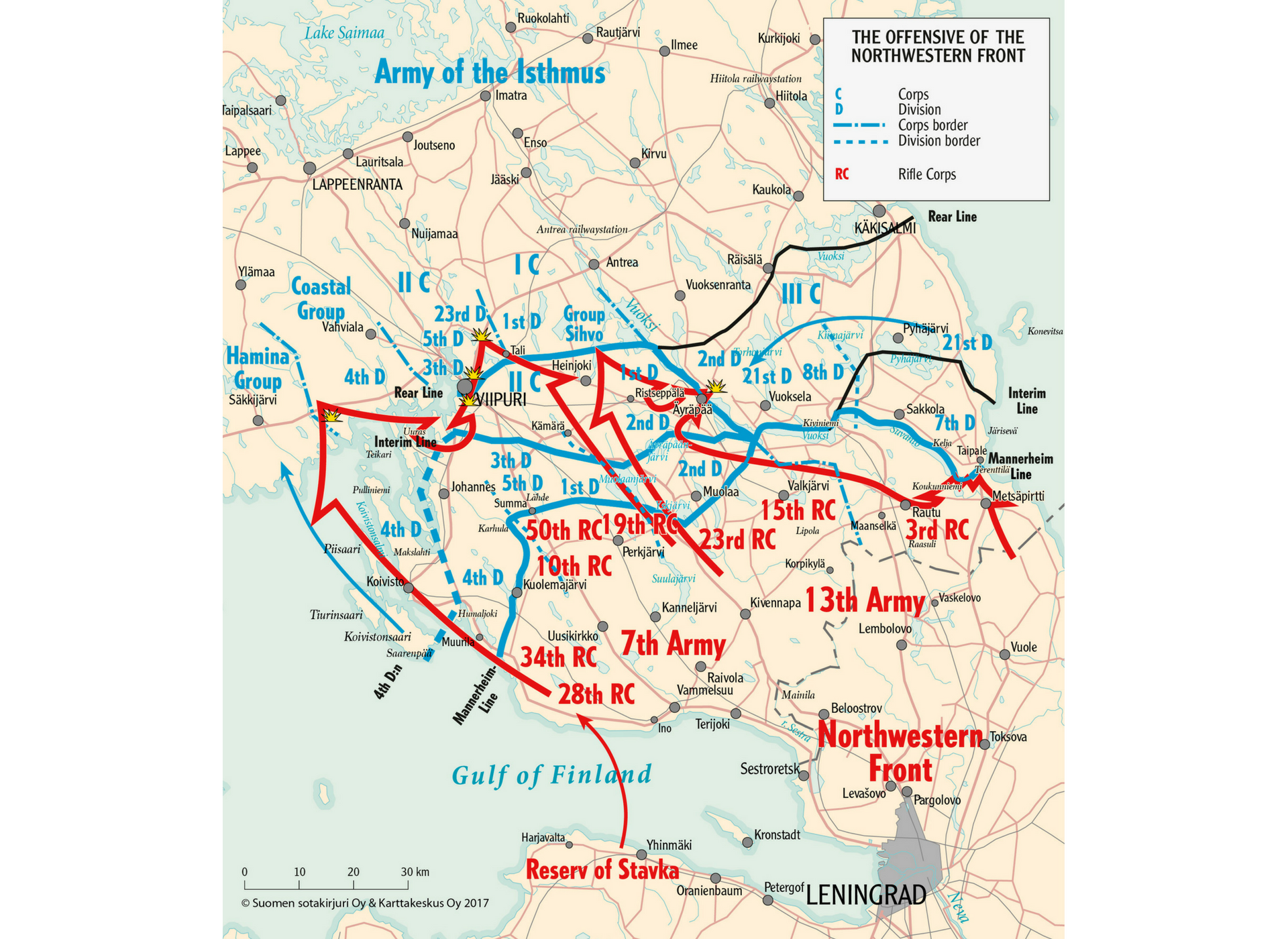
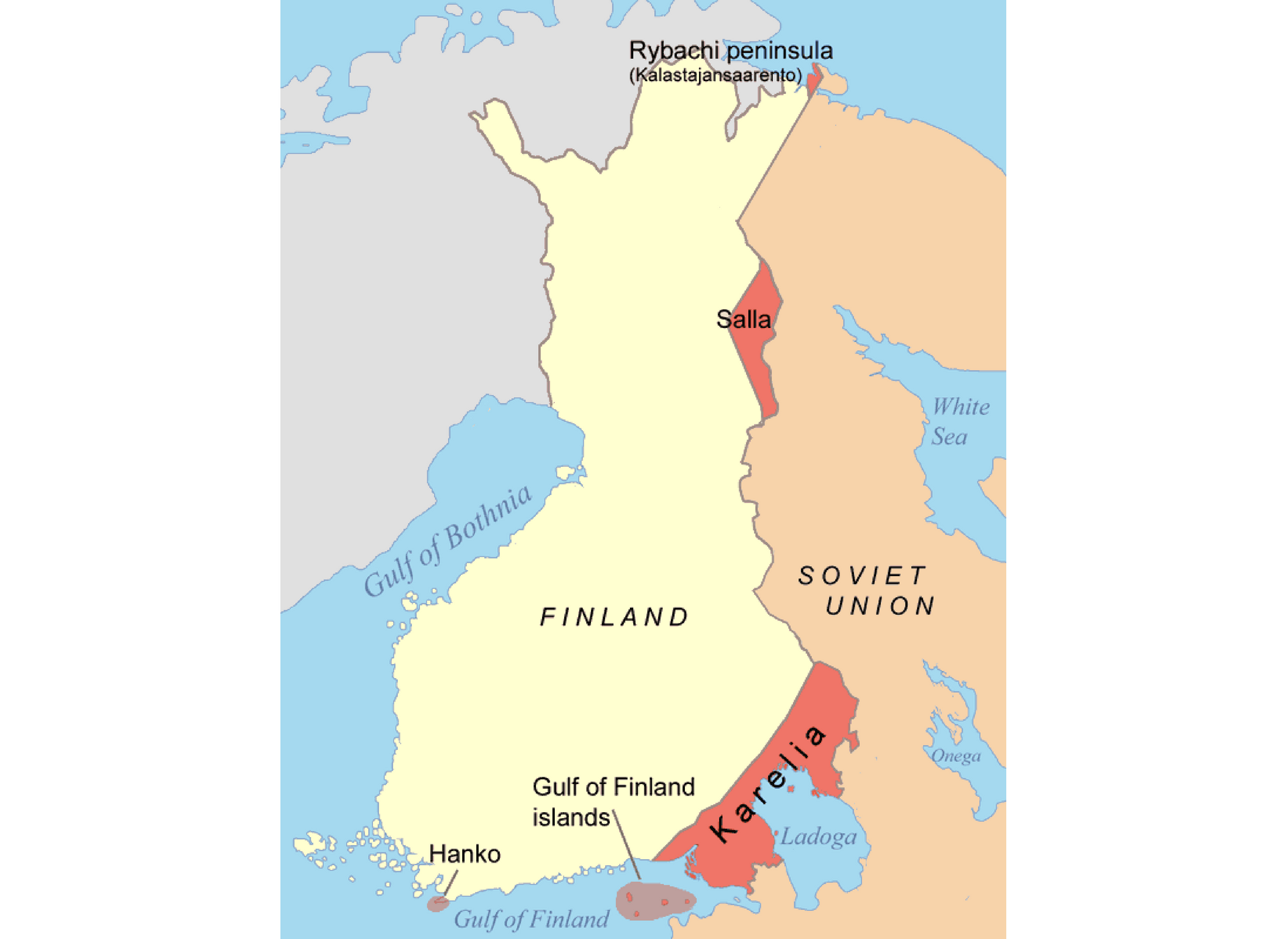




![Max Fuchs, New York City cantor, sings as Rabbi Sydney [sic] Lefkowitz, Richmond, VA, conducts the first Jewish services from Germany.](/sites/default/files/styles/max_650x650/public/2025-10/image1.jpg)



